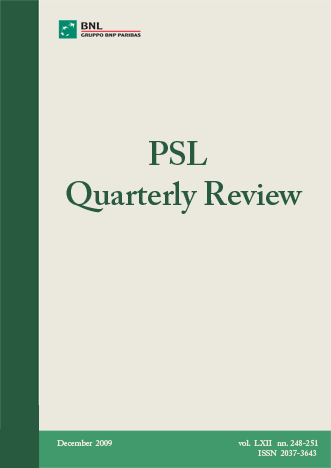Structural biases in prudential regulation of banks
DOI:
https://doi.org/10.13133/2037-3643/9445Keywords:
Financial Crisis, Instability, Rules, BaselAbstract
The Basle rules produce distortions that are no less serious than those attributed to the former structural regulation. Excessive competition is no less harmful than low competition, the level playing field approach helps the large dimension and "too big to fail" results, capital crunches produce serious effects on the economy while the regulatory costs go on absorbing important resources in small banks. It is a matter for further research to verify if the new approach to regulation has also fostered an increase in the part of GDP absorbed by the financial system without bringing about a better distribution of risks and a proportionate increase in what James Tobin (1984) termed full-insurance efficiency. Paper originally published in the BNL Quarterly Review, vol. 54 n. 219, December 2001, pp. 341-353.
JEL Codes: F3, G1, N1, B5
References
ACHARYA V. (2000), "Competition amongst banks, capital adequacy and international spillovers", paper presented at the conference on Capital adequacy requirements: impact and evolution, Siena, 16 December.
BCBS – BASLE COMMITTEE ON BANKING SUPERVISION (2001), The New Basle Capital Accord: an explanatory note, January.
GREENSPAN A. (2000), "Remarks on structural changes in the economy and financial markets", America's Community Bankers Conference, New York, 5 December.
HELLMAN F., MURDOCK K. and STIGLITZ J. (2000), "Liberalization, moral hazard in banking, and prudential regulation: are capital requirements enough?", American Economic Review, March, pp. 147-65.
SHAEFER S. (1991), "Financial regulation: the contribution of the theory of finance", London Business School, mimeo.
TOBIN J. (1984), "On the efficiency of the financial system", Lloyds Bank Review, July, pp. 1-15.
Downloads
Published
How to Cite
Issue
Section
License



